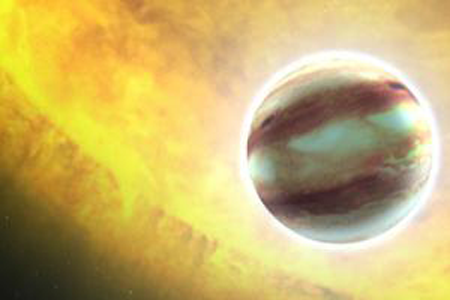Stars Put Up Safety Barriers For Planets. COSMIC BUMPERS.
As scientists have used their super-technos to discover more and more planets, they’ve come to notice a pattern between the distance of these planets from their stars. At first most thought it was because of an unfavorable smell the stars exuded, but it may turn out to be something more clever. The stars themselves put up barriers. Cosmic bumper bowling.
New Scientist:
Hot radiation from young stars could explain why planets revolve at certain distances.
The search for planets outside our solar system has turned up more than 700 planets, with thousands more awaiting confirmation.
Exoplanet surveys have found that relatively few giant planets orbit their stars between 1 and 2 astronomical units (AU, the distance from the Earth to the sun), but a lot of planets orbit slightly further out.
What causes this planetary pile-up? These behemoths are thought to form further away from the star and migrate inwards through a surrounding disc of dust and gas, which drags them inwards. So why don’t they just keep going and plunge into the star?
Ilaria Pascucci of the University of Arizona in Tuscon has used space and ground-based telescopes to watch gas escape from seven infant solar systems. High-energy photons from each young, active star heat the disc’s dust and gas until it evaporates into space.
Not all of it, though: only the gas in a certain region around the star can escape, at a distance of between about 1 and 2 AU. Further away, the star’s radiation is too weak to heat the gas enough. Any closer, and the star’s gravity holds on too tightly.
“This can make a barrier for this migration,” says Pasucci, who presented the model on 19 March at the Lunar and Planetary Science Conference in The Woodlands, Texas. “If you remove the gas, the planet cannot pass beyond that gap. It gets stranded.”
Pretty amazing stuff. The dance of the cosmos, hidden strings! Tying us all together, keeping us all apart. Beautiful, man. Beautiful.




